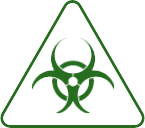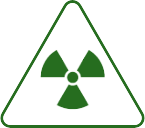
Compressed Gas Cylinder Safety training is designed for employees of the general industry, shipyards, marine terminals, and the construction industry. This training must be administered by the employer and must be completed before the employee begins work.

This course addresses hazards and safety conditions for working with compressed gas cylinders. Potential hazards include oxygen displacement, fires, explosions, and toxic gas exposures. Proper handling and storage procedures are addressed in the course.

Students will also learn definitions of compressed gases and cryogenic liquid and about the Personal Protective Equipment (PPE) used when working with such material.
The Compressed Gas Cylinder Safety course is an online, self-paced class that allows you to work at your own convenience. Work from any device and your progress will be saved right where you left off.
Download an e-certificate immediately upon completion of the course.
The Compressed Gas Cylinder course counts as continuing education units (CEUs). This course is accepted for .167 Industrial Hygiene CM Points by the American Board of Industrial Hygiene (ABIH) and .1 Continuance of Certification (COC) points from the Board of Certified Safety Professionals (BCSP).
Utilize support throughout the course via phone, email or Live Chat.
Access the course for up to 180 days after registering.
“We enjoyed the content and delivery of your training.” S. Maide, U.S. EPA
The Compressed Gas Cylinder Safety course is a one-hour class consisting of award-winning content. All completed hours count as CEUs (Continuing Education Units).
Students will take a series of quizzes throughout the course followed up by a final exam.
This course is eligible for .1 Continuance of Certification (COC) points from the Board of Certified Safety Professionals (BCSP).
The Compressed Gas Cylinder Safety course is made up of four modules and covers the following subject matter:
Course topics:
This course has no prerequisites and works in compliance with OSHA 29 CFR 1910.101 regulations.
There are no physical or on-site requirements necessary for this course. OSHA-approved Plan States may have their own standards but must have standards at least equal to those of the Federal HAZWOPER training requirements.